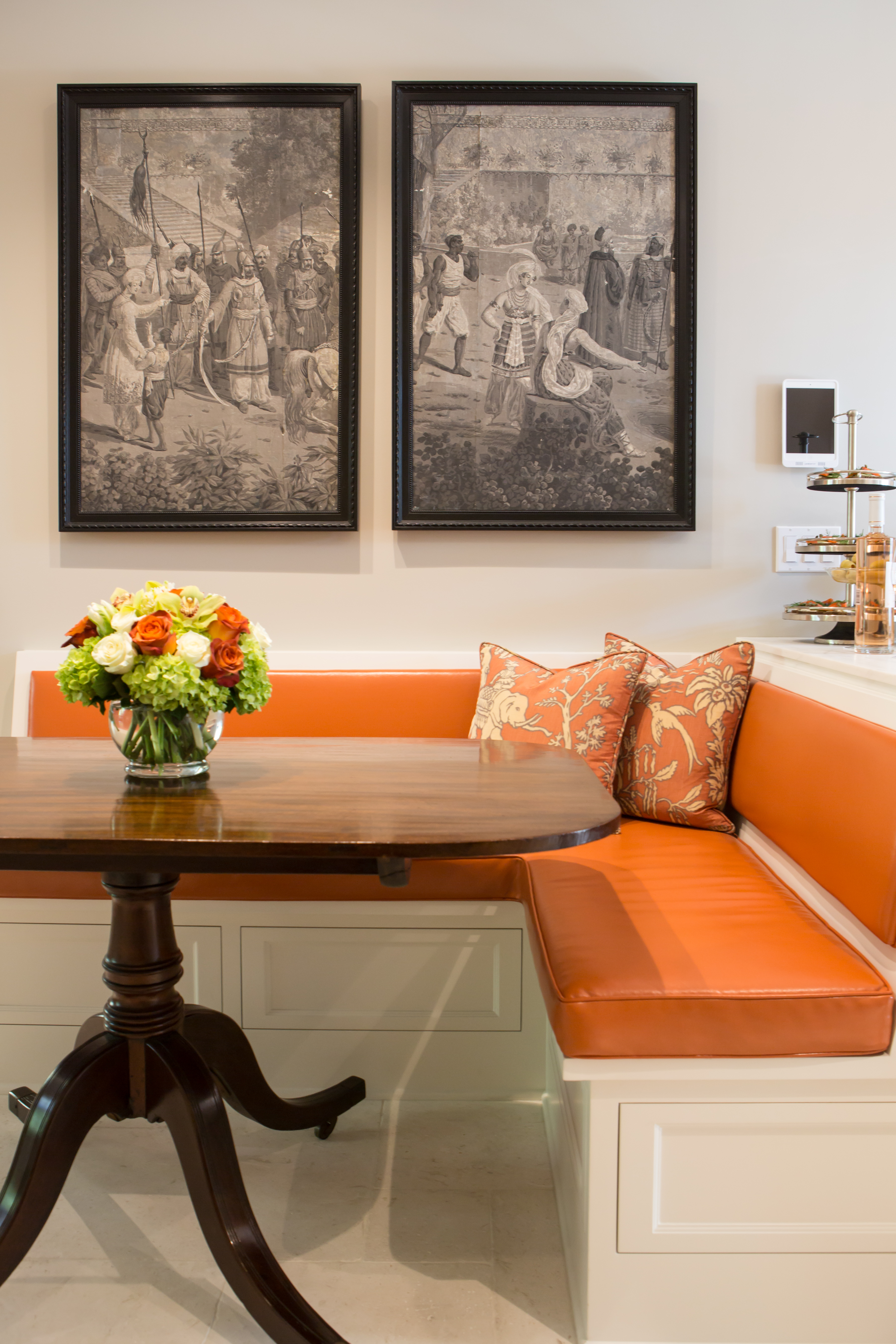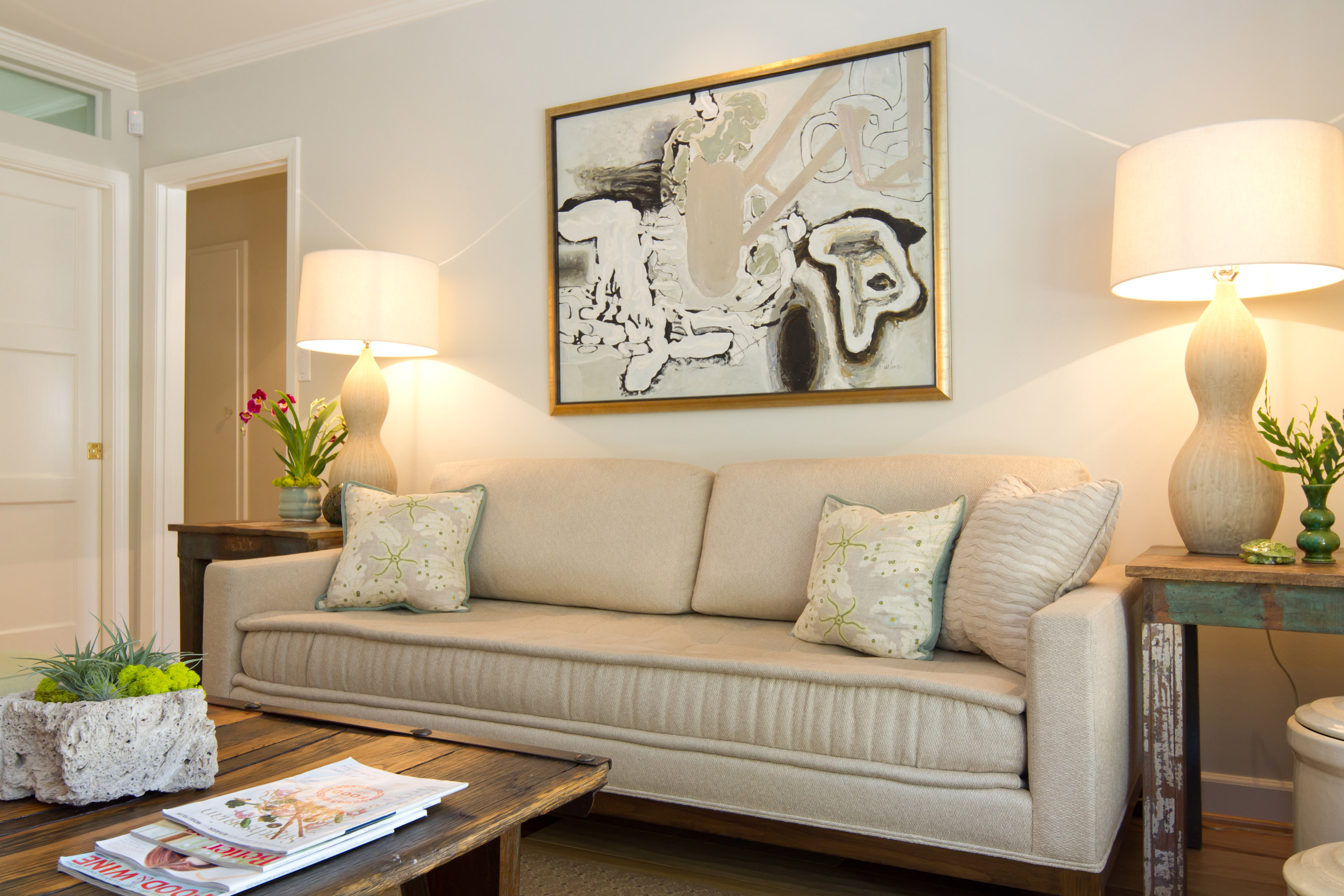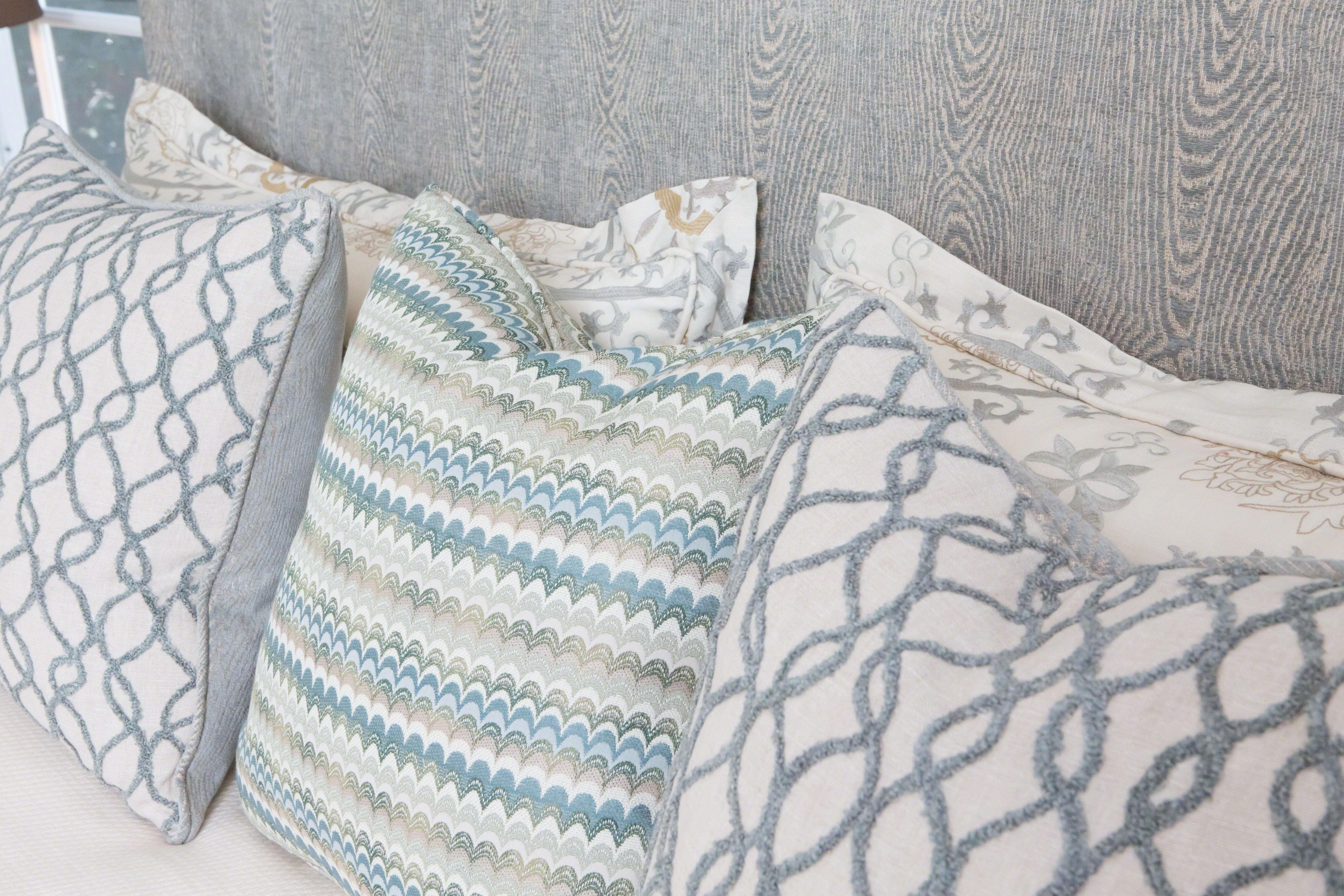The design industry is a fascinating world with a language all its own. I began working for Charmean as her project manager two years ago and since then these are some of the terms that I have learned over the years and use often in my day to day business.
Finial: Doesn’t this sound like something that should live in the ocean? A finial is not a fish but rather the piece that is screwed on the top of a lamp and holds the shade on. The great thing about finials is that a designer can have them custom made for you so it doesn’t need to be a boring round one like you would see at a retailer. Charmean collects small pieces from Etsy, Ebay and antique stores then have holes drilled in the bottom to make into finials.
Banquette: (above photo) It sounds fancy but a banquette is just an upholstered bench or booth that provides seating for a table, usually in a breakfast room or kitchen. We have styled banquettes for many of our clients. It provides a more casual space for a family to gather than a formal dining room.
Coverlet: (below photo) If you think this sounds like something that keeps you warm, you are correct. A coverlet acts as a lightweight blanket that is warmer than a sheet and lighter than a standard duvet. Coverlets are a good “in between” in places where the weather is warm and you don’t need a bedspread all year round.
Matelassé: We often make our coverlets out of this fabric which has stitching design, cushioning and a thickness that has a cozier feel than a standard fabric.
Memo: Memos are small samples of the fabric that our vendors offer. They come bound in books or as single pieces. When Charmean begins a project we lay everything out, rugs, art and furniture that inspires her and then she adds memos of fabrics with patterns and colors that will make the custom pieces in the room.
Double Rubs: Every fabric has a rub count that determines how durable the fabric is and where you should use it in your project. There are two methods of testing fabric, the Martindale and Wyzenbeek Fabric Rub Tests. These two tests both involve a machine that rubs the fabric back and forth until you start to see wear. We typically use fabric with over 20,000 rubs for most of our furniture to ensure its quality and durability. (Example of upholstery weight fabric in photo above.)
Dye Lot/ Batch: Not all bolts of fabric are created equal, nor is every roll of wallpaper exactly the same. Dye formulas can change slightly over time. It’s important when you buy fabric or wallpaper for a project to make sure all cuts of your yardage and rolls of your wallpaper are in the same dye lot or batch or you will certainly see a difference.
Sidemark: A sidemark refers to the project we are working on at the moment. This is often needed when working with vendors. When placing orders, many of our trade accounts ask for the “sidemark” to distinguish the fabric and organize orders on their end. We use the client’s last name or street as the sidemark.
Pile: This can refer to textiles as well as rugs. For both, it describes the raised loops of string that stand up from the ground of the cloth or rug. In fabrics pile is most dramatic in a cut velvet or upholstery weight textile. If you rub your hand over these you can really feel texture, bumps and raised areas. That is why when you touch certain velvet pieces you see marks. Rugs have pile as well and the height of the pile can get as high as an inch or two on a very shaggy rug. Generally, the shorter the pile of the rug, the tighter the weave and the longer the rug might last.
Contrasting Welt: (above photo) This is a fun little design trick to add more interest to a pillow or piece of furniture. This is when the main parts of the piece are made with one pattern of fabric and the welt or piping, which looks like a cord that goes around the edges of the piece, is made with a different color fabric.
Written by Liv Amend Steingart
Photo Credit Erika Bierman





